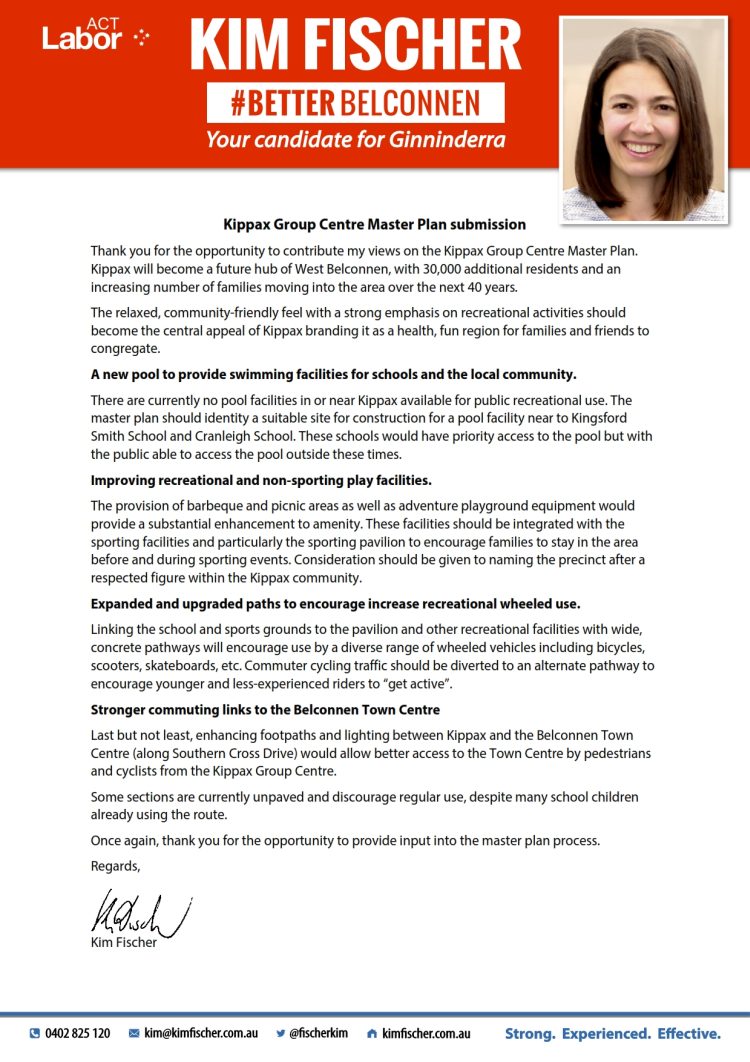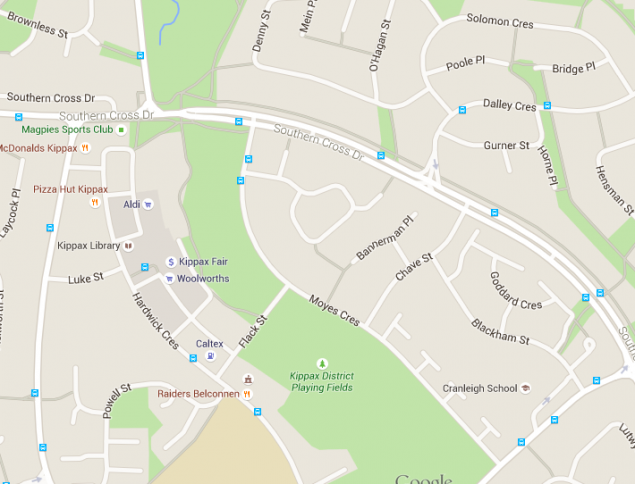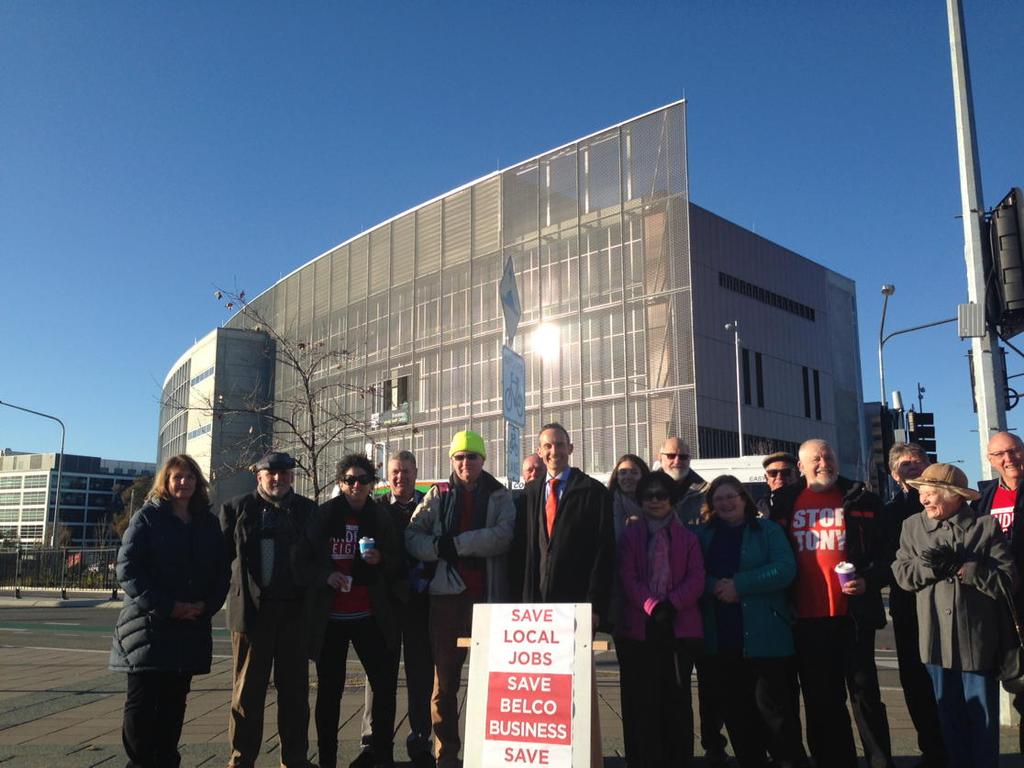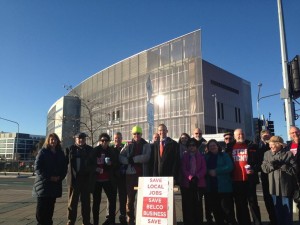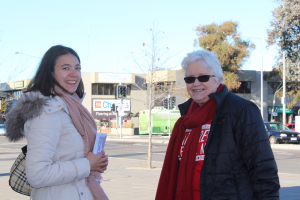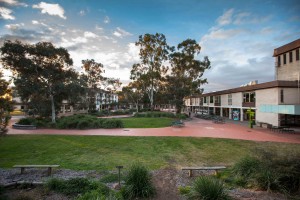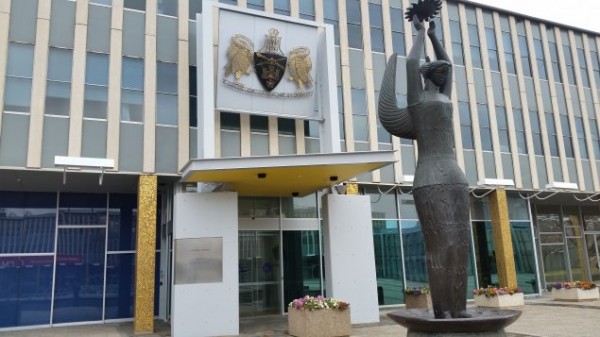(NB: This was submitted to the ACT Government as part of the Kippax Group Centre Master Plan consultation process.)
Category: Town/Group Centres (Page 1 of 2)
The draft Kippax Town Centre master plan continues the ACT government’s work in modernising our group and town centres in line with contemporary planning principles.
Canberra’s period of highest growth and construction was during the 1960s, a time when town planning prized neatness and separation of use. By building highly segregated residential suburbs, commercial districts, and industrial zones, planners encouraged a high reliance on cars to access jobs and shops.
Aside from issues of sustainability and transport, the biggest problem with this old-fashioned planning approach is that commercial centres become dead zones after hours. This leads vandalism and crime, and areas being perceived as unsafe. Planners now recognise that mixing residential developments with commercial developments is an important “eyes on the street” solution. By creating public spaces where residents and shop patrons are potentially watching at any time, people feel safer and crime levels drop.
Mixed-use developments more closely mimic the natural way that human settlements evolve. They provide important benefits such as access to nearby work, greater housing diversity, a stronger neighbourhood character, and pedestrian/bicycle-friendly environments.
One great initiative from Canberra’s early days was the Y-plan. This embedded the concept of mixed-use at the district level, and ensured a range of employment locations outside of the CBD that have saved us from the worst of the commuter problems faced in cities like Melbourne.
Mixed-use is also key to most recent developments such as the proposed cross-border development in West Belconnen / Parkwood. Over the next 20-30 years, up to 11,000 dwellings will be constructed. Residents will be able to choose between different precincts and a range of building heights including an urban village (1 to 6 storeys), village edge (1 to 4 storeys), and garden suburbs (1-2 storeys). The higher density regions are designed from the ground up to integrate a variety of uses that will ensure greater vibrancy and a more consistent level of public activity.
Urban infill and densification in our town centres such as Manuka/Kingston and Belconnen has also relied upon mixed-use principles. A greater residential population has led to more cafes and restaurants operating outside of business hours, creating a feel of activity and life.
By comparison, group centres such as Kippax and Jamison haven’t evolved significantly and while they may be a hive of activity during the day, they feel quite lonely and exposed after hours.
The influential urban activist Jane Jacobs championed the benefits for “density in generating vitality and the economic and social importance of diversity”, but cautioned that planning needs “careful observation and analysis of the way urban places actually work, rather than focusing on their outward appearance”.
In Canberra, a key challenge is to improve the liveability of town and group centres while respecting that suburban areas with few local facilities like Spence and Flynn will rely upon car travel for the foreseeable future. Even here, mixed-use has big benefits. We are seeing more activity flowing back to local shops as our larger centres get busier, encouraging people in our suburbs to walk and take shorter trips.
We are all a product of our times. Some of these changes challenge how we think cities should work. As the planning and urban design firm David Lock Associates wrote: “It is essential that collective consent for the lifestyle and behavioural changes needed to ensure sustainable growth is attained. Collective consent creates a sense of ownership across a community. This requires open and transparent conversations, using a range of techniques and media, in developing a vision for the future.”
One conversation we need to have more is about the function of the Capital Metro tram as more than just a commuter solution. Tram routes are ideal for mixed-use redevelopment, transforming the places they pass into vibrant, local communities where people live, play and work. The social opportunities unlocked by the tram are substantial and it would be a shame if they were ignored because of short-sighted thinking from certain political groups.
The full draft Belconnen Town Centre Master Plan is over 80 pages long, which can be a challenge for time-poor workers and parents to read.
In the interests of better public awareness and debate, I have created a summary of all salient points and proposed activities arising from the master plan, with page references back to the full document:
The Department of Immigration and Border Protection has announced that it is looking forward to “continuing its relationship with the Belconnen community” after cancelling the tender for its headquarters project. The tender had opened the possibility for up to 4000 workers to be moved out of Belconnen to the city or Canberra Airport.
Victory has been a long time coming. The tender was first announced over twelve months ago, leading to a protracted time of worry for workers and local businesses.
The long-term location for DIBP employees in Civic remains uncertain. However, it is possible that they may either obtain new accommodation in Civic or Belconnen through a new tender process, or take up surplus government accommodation in nearby buildings (for example, at ABS House).
The biggest win for Canberra is the acknowledgement that local impacts need to be taken into account when the Commonwealth changes its accommodation arrangements. For the first time ever, there are now formal processes to evaluate local impacts when a proposed move represents more than 10% of the available jobs in a locality.
This has shown the power of an active local campaign to effect change. Many individuals and groups have contributed to the campaign. Most notably, local pollie Andrew Leigh was tireless in his efforts to organise petitions, bus stalls, and promote awareness of the situation, aided by Chris Bourke, Katy Gallagher, and Zed Seselja. The CPSU has also run a very active campaign in cooperation with a number of other local community groups.
This is a genuinely great outcome for the Belconnen community and for the ACT that protects the viability of our town centres into the future.
There was a good crowd and a great cross-set of community organisations represented at the West Belconnen Commitment 2 Community on Saturday.

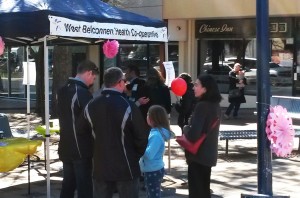
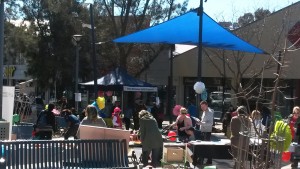
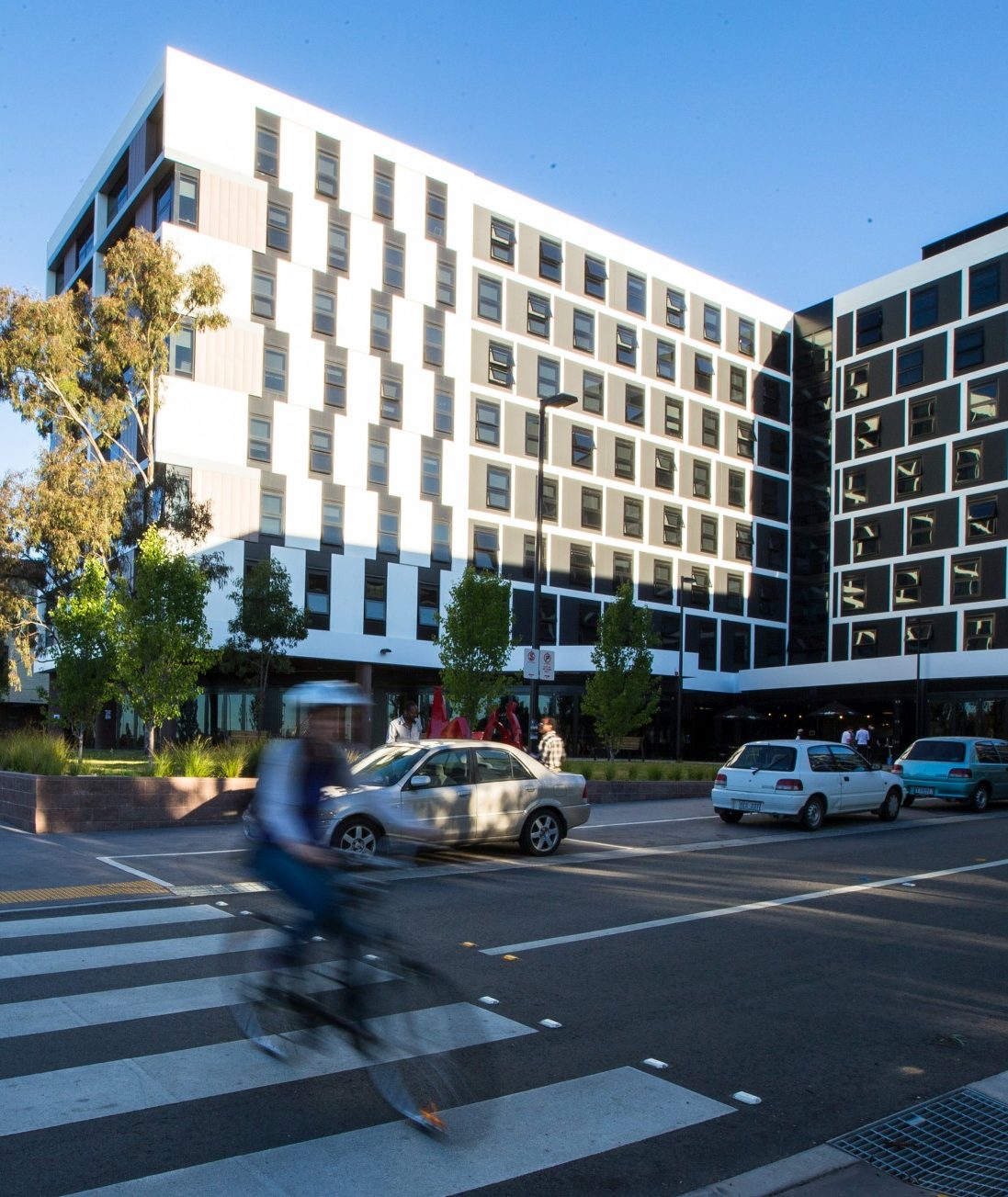
How UC plans to become a world-ranked university by 2018
If the University of Canberra is to become a world-ranked university, we need to improve infrastructure in Belconnen.
I attended a public meeting late last month in which UC Vice-Chancellor Professor Stephen Parker explained his 15 year vision for the University of Canberra. I was impressed at the level of interest, with a packed auditorium that was standing-room only.
Bruce is an important education hub, with over 20,000 students attending the University of Canberra, UC Senior Secondary College Lake Ginninderra, Radford College, the Australian Institute of Sport and the Canberra Institute of Technology.
UC has outlined an ambitious program for transforming itself into a world-ranked university that supports a wide range of teaching, research and development programs run by both public and private enterprises. This will reshape the suburb and the Belconnen town centre forever.
As the university expands, better infrastructure and stronger links between the town centre and the university would encourage students, staff, and employees from UC to come to Belconnen and vice versa, invigorating the lakeshore precinct.
This will need investment in improved infrastructure as part of the Belconnen Town Centre Master Plan. For example, my submission to the consultation process suggested a promenadefor cyclists and pedestrians from Emu Bank to the College Street entrance for the university, and it seems likely that dual-lane upgrades to the already congested Aikman Drive and College Street will be necessary.
Highlights of the $1 billion plan for UC include:
- An increased focus on whole-of-life education
UC wants primary and secondary schools to be located on campus and to offer strong pathways into university courses. UC already has an arrangement with two schools, UC High School, Kaleen and UC Senior Secondary College, Lake Ginninderra to provide opportunities for Territory teachers’ professional development and engagement with academics of the university. The university expects the University of Canberra College to continue to grow, helping domestic and international students of all ages enter tertiary education, while the University of the Third Age offers courses for Canberra’s growing retiree community. - A health precinct
This includes the 140 bed sub-acute care UC Public Hospital announced by the ACT Government focusing on providing a more “home-like environment”. The precinct will also house private hospitals, independent living and aged care facilities, specialist clinics and health research facilities. - Building residences for staff, alumni and members of the public
In addition to the existing 1700 beds on campus, 3000 new “dwellings” will be built for staff, alumni, and the public to live on-campus. - Developing an Innovation Park
This includes biomedicine, biotechnology, sports technology, materials fabrication and IT solutions. The goal of this R&D facility is for “national and global organisations [to] compete for space on campus to be close to research academics and students”.
The university aims to embrace new and emerging kinds of employment and help build the next generation of jobs and opportunities for entrepreneurs.
Professor Stephen Parker explained at the meeting that as a comparatively young university, UC does not have an additional income stream. However, it does have a large allotment of land, so by building commercial and residential facilities onsite it can unlock funds to invest back into the university and its students with the goal of achieving a world ranking by 2018.
I think Professor Parker has an exciting vision for UC that will bring substantial changes both to Belconnen and Canberra. What do you think about his plans?
Photo credit: University of Canberra
The 2016 ACT election will be the most significant election since self-government.
The increase from 17 MLAs to 25 should mean that our local communities are better represented in the Assembly. With five electorates of five members, each electorate now mostly lines up with Canberra’s regions.
Under the current three electorate system, the larger electorate sizes means that your elected representatives may have had little or no awareness of your local community’s needs. Molonglo was particularly problematic in this regard. Prior to the election of Meegan Fitzharris in 2015, no elected representative of Molonglo had been a resident of Gungahlin.
It’s tempting to just focus on the practicalities of fitting eight more members into the Legislative Assembly, but this would be a wasted opportunity.
After 25 years of self-government, it is an opportune time to rethink how we expect our Assembly to operate.
At the moment there is an ivory tower mentality held by many in the Assembly. Uniquely amongst parliamentary systems in Australia, members are not allocated local electorate offices. This means that MLAs and their staff can work in the Legislative Assembly every day and virtually never see their actual electorates.
Organisations regularly come into the Assembly to meet with MLAs. However, individuals rarely do and mostly communicate with MLAs by mail or email.
Without a local office, direct engagement with their constituents becomes almost entirely at the discretion of the local member. Mary Porter has set the benchmark for other MLAs, being well known for her mobile offices that regularly appear throughout her electorate. Unfortunately not all MLAs are as dedicated to these engagement activities.
Perhaps we should investigate a more permanent solution to encourage our MLAs to venture out of Civic Square. We don’t have to adopt the most expensive option of funding an office for each MLA though.
Why not make a shared space available in a town centre for the members of each electorate? The ACT Government already has property in just about every suburb, so the cost should be minor.
Access to a dedicated place to hold forums and hear the needs of their constituents would increase the accountability of MLAs and encourage them to work cooperatively on important local issues.
Imagine if a local meeting attended by the five electorate MLAs was held every month, either on a prearranged topic or on topics contributed by constituents. The goal would be to run the meeting as a productive, non-adversarial community forum with a minimum of formal structures such as motions and votes.
Alternatively, MLAs could be rostered to attend a community meeting that rotates through each of the 15 or so suburbs in their electorate. It would undoubtedly be a good thing for our MLAs to visit each suburb that they represent regularly.
Increasing the engagement of our MLAs with their electorate might mean a rethink about our community councils as well. Currently community councils are subsidised by the government in return for facilitating consultative meetings on a range of issues. But there’s no reason why these meetings couldn’t be hosted by our MLAs instead. Indeed, since they are our formally elected representatives and spokespeople it makes more sense for them to take on this role. Hearing complaints about specific roads, footpaths and other local issues would give them a greater awareness of community sentiment on issues and keep them better engaged with the population generally.
As recent articles have reported, the Department of Immigration and Border Protection is considering moving its 4000 employees out of Belconnen. Tender documents have revealed the department is looking to lease 80,000 square metres of building space in one precinct.
More recently, the Department of Finance assumed responsibility for this decision as part of a broader accommodation review announced by the Federal Government. Finance has promised to take local interests into account, a line hailed as indicating success in the campaign against the move in the media and by some community groups.
This would be premature.
For a start, neither Finance or Immigration can explain how the concept of a ‘local interest’ can be incorporated into a tender process that assumes a level playing field for respondents. And even if Immigration stays in Belconnen (as it rightly should), it’s only a matter of time before another rogue Departmental Secretary thinks it’s a good idea to try something like this again. Just back in 2013 there were similar rumours of Centrelink employees being moved out of Tuggeranong.
The impact caused by Departments leaving town centres can be devastating. Think about what would happen if Immigration left Belconnen:
- There would be an estimated $41 million annual loss to businesses in the Belconnen town centre, with further job losses and shop closures inevitable. The new apartment buildings being constructed in the area would become less appealing for buyers.
- The two most likely locations for a relocated Immigration department are Civic and the airport. Either way, the thousands of employees living northside will have to squeeze through the chokepoints at Civic and/or Russell in morning and afternoon peak hour traffic. More cars on the road means more delays and more stress.
- Assuming that most employees live near Belconnen, any shift could increase typical commute times by up to an hour per day. Quite aside from the additional transport costs, this move completely ignores any commitments that its employees might have outside work, like school pickups for children. The public service should be a model employer, and to consider acting in this way sends a message that the needs of its employees don’t matter.
The Federal Government is by far the largest employer in the ACT. Precisely because of these large potential impacts, the local governments of most cities with a single major employer remain in constant conversation about employment and investment decisions. Yet the ACT Government remains strangely disengaged about this whole affair, and appears to be just hoping that things work out.
I have been campaigning over the last few months for an improved and permanently agreed process for handling Commonwealth department relocations. Any such process should routinely include conversations with affected staff, the Chief Minister, and the local community.
If the Department of Immigration needs all its workers in the one location, moving 4000 Immigration workers to another location after 40 years in Belconnen isn’t the way to go. It would be far better to move the 1500 Customs workers to Belconnen. As this would have a smaller but noticeable effect on the economy in Civic, a cautious approach is still necessary. This is a good opportunity for the Department of Finance and the ACT Government to trial a more consultative approach.
